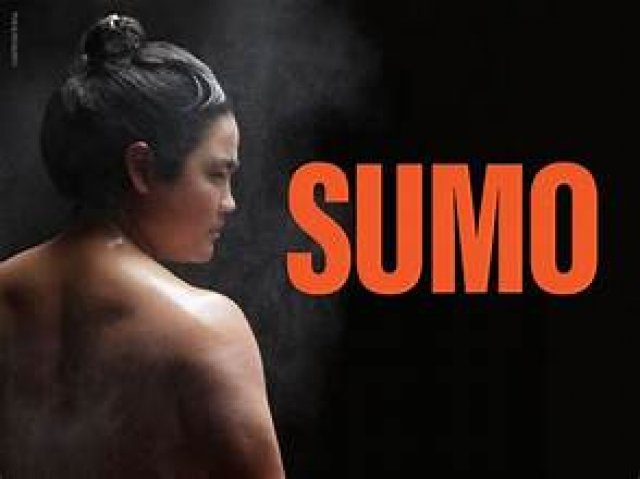Sumo at the La Jolla Playhouse
Lisa Sanaya Dring's Play on Wrestling
By: Sharon Eubanks - Oct 18, 2023
Lisa Sanaya Dring’s Sumo, playing at La Jolla Playhouse, tells the story of six sumo wrestlers living and training at an elite facility in Tokyo.
Sumo is believed to have roots in Shinto rituals. Men displayed strength in front of gods and spirits as a sign of respect and gratitude. A modern-day sumo match takes place in a dohyo, a ring which must be cleansed before each bout. Before entering the ring, the wrestlers (rikishi) perform elaborate rituals intended to attract the attention of the gods and to further cleanse the ring of any lingering evil spirits. A bout in which the rikishi collide with each other is usually over in seconds; if any part of the body other than the feet touch the ground or a rikishi steps outside the ring they lose the bout.
At the beginning of Sumo, we see young Akio in a training facility. He has lost his mother and has nowhere else to go. As a young apprentice, Akio’s duty is to cleanse the training facility, including the dohyo, for the elite rikishi. Akio is ambitious, aggressive, and determined to make it as a sumo wrestler. Akio gains the confidence of one of the elite rikishi. He takes Akio under his wing and teaches him how to fight. The notion of cleansing is constant throughout the play. Akio and lower-status males are always cleaning the facilities. The elite wrestlers are always in luxurious baths. Akio grows up in this all-male environment where women are seen as impure.
As in a sumo match, the play is a series of collisions between these men who live and train with each other. The rikishi collide with each other to achieve the level of Yokozuna, the most elite level of sumo. However, they do need money. A telling scene shows rikishi, who practice a sacred art form, having to play the role of court jesters to a group of stuffy businessmen in order to secure sponsorship financing to maintain their way of life.
Akio collides with the rikishi as he rises in the sport, even betraying his mentor to get ahead. Akio wants to be a man, but also longs for his deceased mother.
Not all make it to the top. There are those who succeed and those who fail, due to lack of ambition, not being ruthless enough, and wear and tear on the body.
At the end of a sumo match, both rikishi stand at either side of the ring and bow to the other. The defeated rikishi leaves the ring and the referee, or gyöji, officially declares the winner. Akio at last defeats his mentor. The defeated mentor bows and leaves the stage.
Akio has succeeded. He is a revered sumo. He has influence. Was the ambition, betrayal of his mentors worth it? Lisa Sanaya Dring leaves us wondering.
Sumo draws us into a fascinating world of a martial art that is unknown to most Westerners. Scott Keiji Takeda’s performance as Akio is tense and nuanced as he progresses from lowly servant in the training facility to stardom. The excellent cast provides superb support as this play examines the sacrifices, joys, and concepts of masculinity from an Asian perspective.

